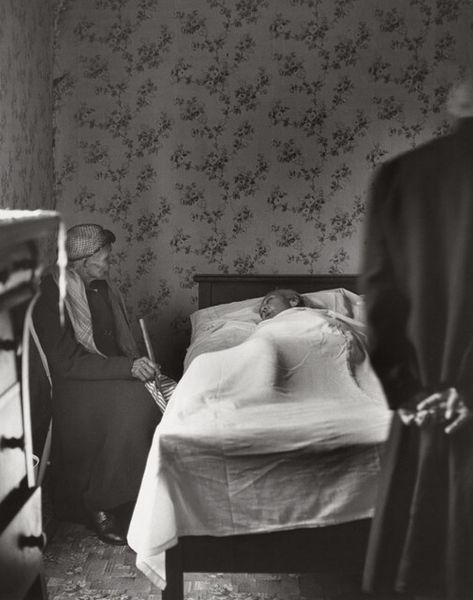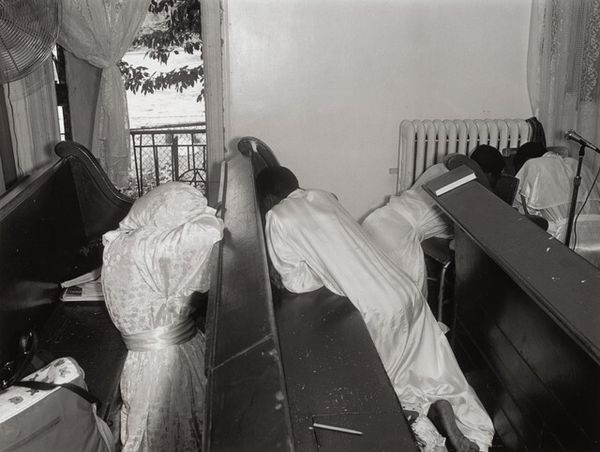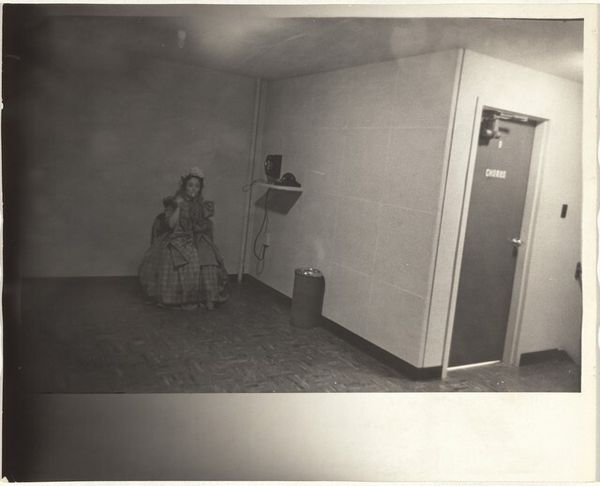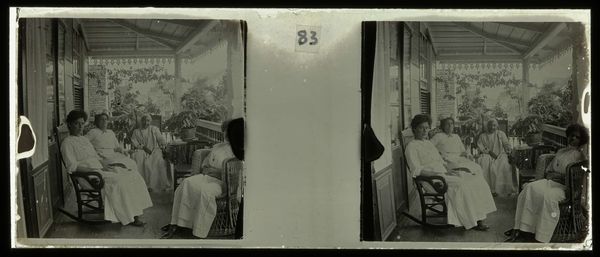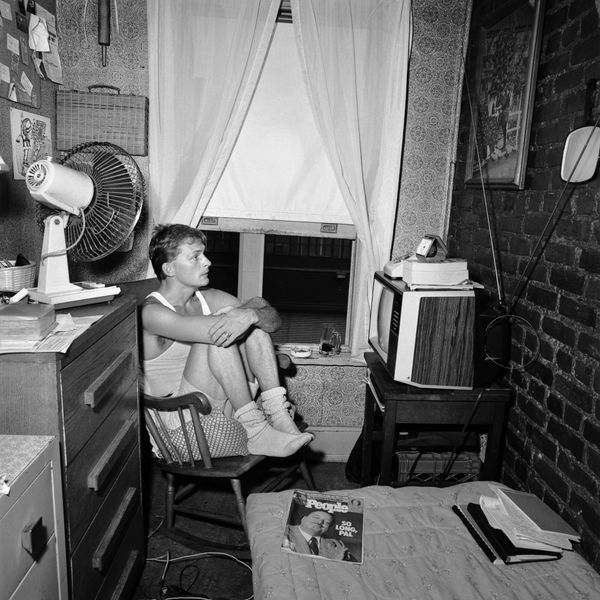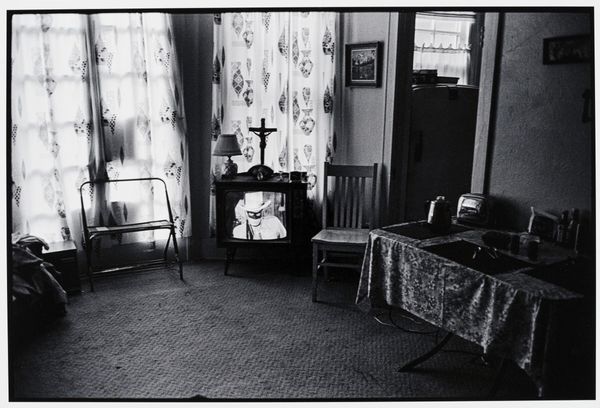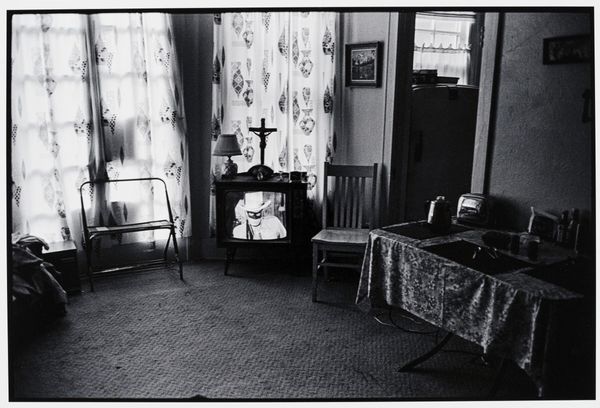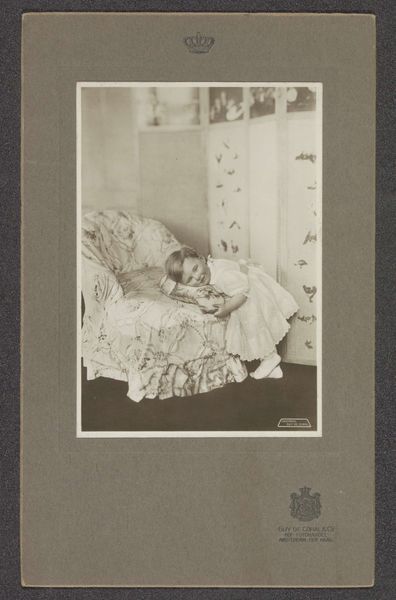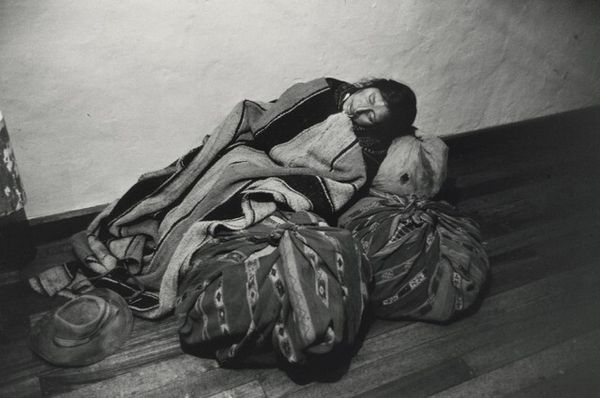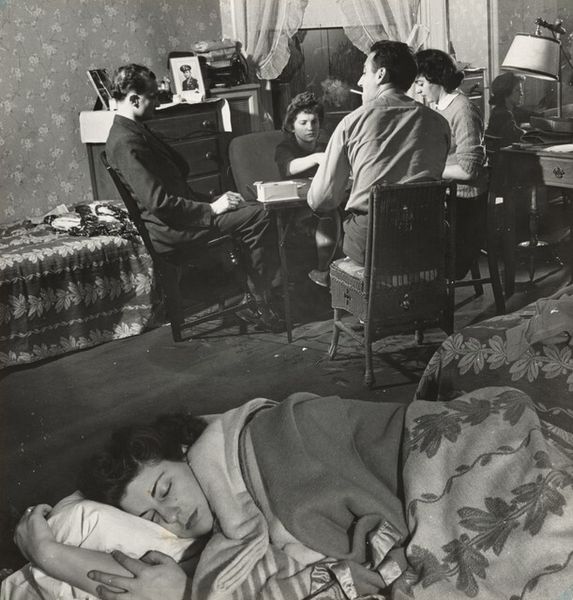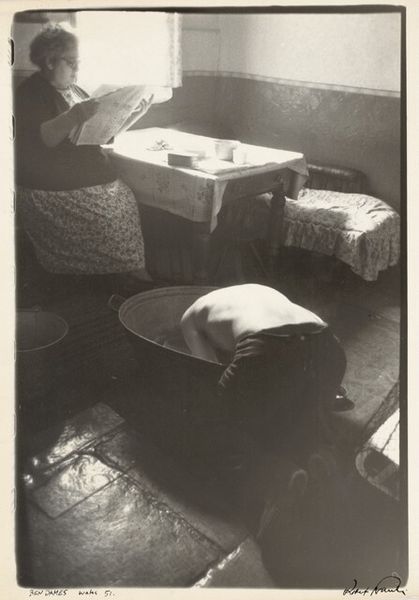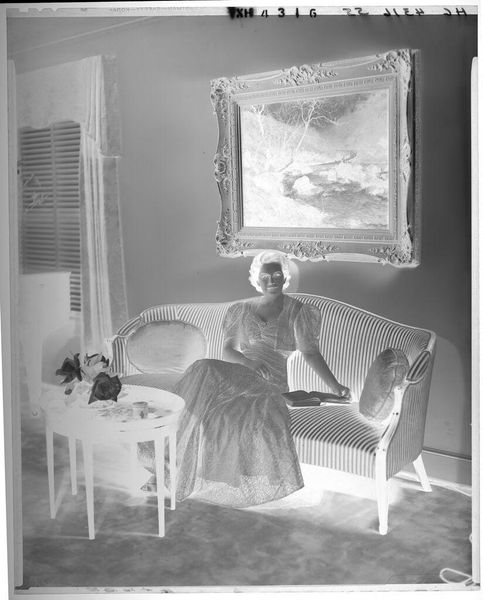
photography, gelatin-silver-print
#
portrait
#
black and white photography
#
photography
#
black and white
#
gelatin-silver-print
#
monochrome photography
#
genre-painting
#
monochrome
#
realism
#
monochrome
Dimensions: image: 32.5 × 24.1 cm (12 13/16 × 9 1/2 in.) sheet: 35.56 × 27.94 cm (14 × 11 in.)
Copyright: National Gallery of Art: CC0 1.0
Editor: This is an untitled photograph by Thomas Roma, taken in 1992. It's a gelatin-silver print, showing a woman laughing in what looks like a church office. There’s something so intimate about this captured moment of unrestrained joy. What do you see in this piece? Curator: Immediately, I see a tension between the candid expression of the woman and the almost stage-like setting. The “PASTOR” sign on the door, the very formal curtains, even the calendar all point to a specific social context, a power dynamic within a religious space. The photograph begs the question of the role of women in the church during that time. Was her joy performative, an expected emotion, or truly authentic? And how does the institutional context both allow for and constrain such expressions? Editor: That’s a fascinating perspective! I hadn't considered the staged aspect so deeply. I was more drawn to the genuineness of her laugh, the human connection that transcends the setting. Do you think that focus detracts from any critical reading? Curator: Not at all. Your instinct speaks to the power of portraiture in challenging institutional control. The image, through her visible happiness, asserts an individual identity within the constraints of a clearly defined social role. Look at the equipment placed on top of the door. How might this photograph's setting shape its cultural role? Does that have an effect? Editor: It is definitely quite suggestive. The woman laughing resists what looks like rigid circumstances. I guess I see both authenticity and subtle subversion at play. Curator: Exactly. It is about this interplay. It invites reflection on how we, as viewers, project our own understanding of joy, religion, and societal expectations onto a single moment captured in time. Editor: That gives me a lot to think about – how the politics of imagery really frames even seemingly straightforward subjects. Curator: Absolutely, and hopefully helps us to consider those same forces when analyzing other work!
Comments
No comments
Be the first to comment and join the conversation on the ultimate creative platform.
